Filter by

Analyzing the DNA Stability of U87 Glioblastoma Cells After Co-Culturing With…
- Edition
- -
- ISBN/ISSN
- EP061
- Collation
- 58 p. : ill. ; 30 cm.
- Series Title
- -
- Call Number
- EP BT-009
- Edition
- -
- ISBN/ISSN
- EP061
- Collation
- 58 p. : ill. ; 30 cm.
- Series Title
- -
- Call Number
- EP BT-009

Molecular Detection of Mannonate Dehydratase Genes and its Transcriptional Ac…
- Edition
- -
- ISBN/ISSN
- EP054
- Collation
- 50 p. : ill. ; 30 cm.
- Series Title
- -
- Call Number
- EP BT-002
- Edition
- -
- ISBN/ISSN
- EP054
- Collation
- 50 p. : ill. ; 30 cm.
- Series Title
- -
- Call Number
- EP BT-002

The Investigation of the Synergy Effect Between COH29 and Irradiation Treatme…
- Edition
- -
- ISBN/ISSN
- Intern 07-2024
- Collation
- vii, 20 p. : ill. ; 30 cm.
- Series Title
- -
- Call Number
- PH-007
- Edition
- -
- ISBN/ISSN
- Intern 07-2024
- Collation
- vii, 20 p. : ill. ; 30 cm.
- Series Title
- -
- Call Number
- PH-007

Investigating the Interaction Between RAD54 Terminal Domains to RAD54B Motor …
DNA damage is a complex phenomenon arising from both endogenous and exogenous sources, posing threats to genomic stability and necessitating an effective DNA damage response (DDR). A dysfunctional DDR can cause genomic instability, which is defined by a higher frequency of DNA mutations. Genomic instability is a common feature of many cancers, and it can result in oncogenic mutations and tu…
- Edition
- -
- ISBN/ISSN
- -
- Collation
- -
- Series Title
- -
- Call Number
- BM 24-036

Investigating the Role of HDXX as a Novel DNA Damage Response Protein in Colo…
Colorectal cancer (CRC) ranks third in cancer incidence and cancer-related mortalities worldwide. The transformation of normal colon and rectal cells to malignant adenocarcinomas due to unrepaired DNA damage which leads to oncogenic mutations. These mutations also increase the frequency of DNA damage, leading to endogenous replication stress (RS). This introduces an opportunity to induce sy…
- Edition
- -
- ISBN/ISSN
- -
- Collation
- -
- Series Title
- -
- Call Number
- BM 24-024

DNA barcoding & metabarcoding : eksplorasi dan monitoring keanekaragaman haya…
- Edition
- -
- ISBN/ISSN
- 9786231765826
- Collation
- xviii, 285 p. : ill. ; 21 cm.
- Series Title
- -
- Call Number
- 572.86 Put d
- Edition
- -
- ISBN/ISSN
- 9786231765826
- Collation
- xviii, 285 p. : ill. ; 21 cm.
- Series Title
- -
- Call Number
- 572.86 Put d

In Vitro Study of Sunscreen Product Towards UV-B and Protection Through Measu…
Ultraviolet light is a type of light that is exhibited from the sun. Ultraviolet is divided into 3 types, including UV-A, UV-B, and UV-C light. These Ultraviolet light might cause several adverse effects including skin and eye damage. Hence, the application of sunscreen is important to prevent the damage induced by UV exposure. Sunscreen is divided into several types including cream, stick, …
- Edition
- -
- ISBN/ISSN
- -
- Collation
- -
- Series Title
- -
- Call Number
- PHA 24-008

Investigation on the Removal of Depth Filter For an Effective Human Recombina…
Erythropoietin is a glycoprotein hormone produced by the kidney, which triggers the formation of red blood cells in the bone marrow. However, due to chronic kidney disease, the erythropoietin hormone is insufficiently produced in anemic conditions. Hence, a therapeutic recombinant human erythropoietin (rhEPO) is the alternative way to overcome chronic anemia. Genetically engineered host cells,…
- Edition
- -
- ISBN/ISSN
- -
- Collation
- -
- Series Title
- -
- Call Number
- BT 23-021

Investigation on the removal of Depth Filter for an effective Human Recombina…
Erythropoietin is a glycoprotein hormone produced by the kidney, which triggers the formation of red blood cells in the bone marrow. However, due to chronic kidney disease, the erythropoietin hormone is insufficiently produced in anemic conditions. Hence, a therapeutic recombinant human erythropoietin (rhEPO) is the alternative way to overcome chronic anemia. Genetically engineered host ce…
- Edition
- -
- ISBN/ISSN
- -
- Collation
- -
- Series Title
- -
- Call Number
- EP BT021

Detection of Mutation in Exons of HBB, HBA1, and HBA2 Genes of Thalassemia Pa…
Thalassemia can be defined as a recessive autosomal blood disorder that mainly affects the amount and normal function of hemoglobin that works primarily to carry oxygen throughout the body. The low amount or absence of hemoglobin within the red blood cells can cause a tremendous effect on the body as the RBCs could be degraded, creating an anemic condition for those who suffer from the dis…
- Edition
- -
- ISBN/ISSN
- -
- Collation
- -
- Series Title
- -
- Call Number
- BM 22-019
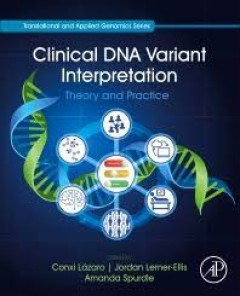
Clinical dna variant interpretation : theory and practice
Compiles best practices, methods and sound evidence for DNA variant classification in one applied volume Features chapter contributions from international leaders in the field Includes practical examples of variant classification for common and rare disorders, and across clinical phenotypes.
- Edition
- -
- ISBN/ISSN
- 9780128205198
- Collation
- xxvi, 410 p. : ill. : ind. ; 24 cm.
- Series Title
- -
- Call Number
- 610.28 Cli

Restriction enzymes : a history
- Edition
- -
- ISBN/ISSN
- 9781621821052
- Collation
- xiv, 346 p. : ill. : ind. ; 24 cm.
- Series Title
- -
- Call Number
- 572.76 Loe r
- Edition
- -
- ISBN/ISSN
- 9781621821052
- Collation
- xiv, 346 p. : ill. : ind. ; 24 cm.
- Series Title
- -
- Call Number
- 572.76 Loe r

The annotated and illustrated double helix
- Edition
- -
- ISBN/ISSN
- 9781476715490
- Collation
- xvi, 345 p. : ill. : ind. ; 22 cm.
- Series Title
- -
- Call Number
- 572.86 Wat a
- Edition
- -
- ISBN/ISSN
- 9781476715490
- Collation
- xvi, 345 p. : ill. : ind. ; 22 cm.
- Series Title
- -
- Call Number
- 572.86 Wat a
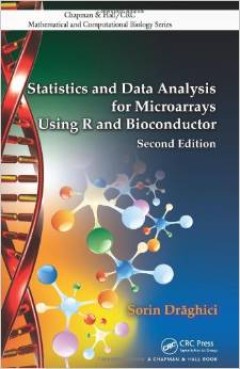
Statistics and data analysis for microarrays using R and Bioconductor
Richly illustrated in color, Statistics and Data Analysis for Microarrays Using R and Bioconductor, Second Edition provides a clear and rigorous description of powerful analysis techniques and algorithms for mining and interpreting biological information. Omitting tedious details, heavy formalisms, and cryptic notations, the text takes a hands-on, example-based approach that teaches students th…
- Edition
- -
- ISBN/ISSN
- 9781439809754
- Collation
- xlviii, 1042 p. : ill. : ind. ; 25 cm
- Series Title
- -
- Call Number
- 572.8636 Dra s
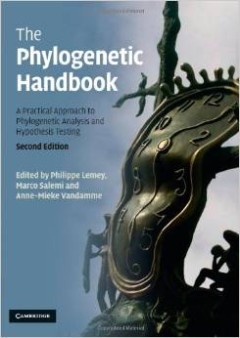
The phylogenetic handbook : a practical approach to phylogenetic analysis and…
The Phylogenetic Handbook is a broad, hands on guide to theory and practice of nucleotide and protein phylogenetic analysis. This second edition includes six new chapters, covering topics such as Bayesian inference, tree topology testing and the impact of recombination on phylogenies, as well as a detailed section on molecular adaptation. The book has a stronger focus on hypothesis testing than…
- Edition
- 2nd
- ISBN/ISSN
- 9780521730716
- Collation
- xxvi, 723 p. : ill. : ind. ; 26 cm.
- Series Title
- -
- Call Number
- 578.012 Phy
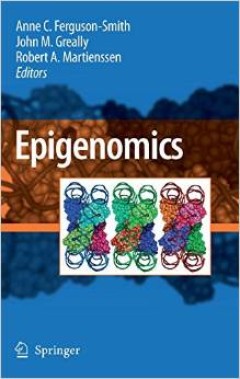
Epigenomics
Epigenetic modifications act on DNA and its packaging proteins, the histones, to regulate genome function. Manifest as the heritable methylation of DNA and as post-translational histone modifications, these molecular flags influence the architecture and integrity of the chromosome, the accessibility of DNA to gene regulatory components and the ability of chromatin to interact within nuclear com…
- Edition
- -
- ISBN/ISSN
- 9781402091865
- Collation
- xiv, 438 p. : ill. : ind. ; 24 cm.
- Series Title
- -
- Call Number
- 572.87 Epi
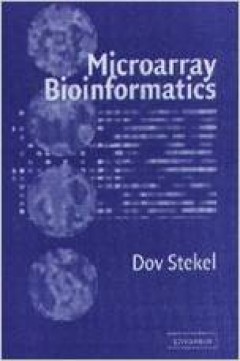
Microarray bioinformatics
DNA microarrays have revolutionized molecular biology and are becoming a standard tool in the field. Dov Stekel's book is a comprehensive guide to the mathematics, statistics, and computing required to use microarrays successfully. Unlike traditional molecular biology, the successful use of DNA microarrays requires the application of statistics and computing to design the arrays and experiments…
- Edition
- -
- ISBN/ISSN
- 9780521525879
- Collation
- 263 p. : ill. : ind. ; 26 cm.
- Series Title
- -
- Call Number
- 572.8636 Ste m

Gene cloning and DNA analysis : an introduction
Known world-wide as the standard introductory text to this important and exciting area, the sixth edition of Gene Cloning and DNA Analysis addresses new and growing areas of research whilst retaining the philosophy of the previous editions. Assuming the reader has little prior knowledge of the subject, its importance, the principles of the techniques used and their applications are all carefull…
- Edition
- 6th
- ISBN/ISSN
- 978-1405181730
- Collation
- xvi, 320 p. : ill. : ind. ;
- Series Title
- -
- Call Number
- 572.8 Bro g
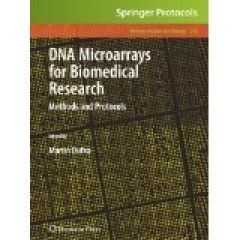
DNA microarrays for biomedical research : methods and protocols
DNA microarray technology has revolutionized research in the past decade. Initially an application for mRNA expression studies, the technology now has spread to other applications such as comparative genomic hybridization, SNP and mutation analysis. In DNA Microarrays for Biomedical Research: Methods and Protocols, experts explore these now commonly used applications, addressing probe design st…
- Edition
- -
- ISBN/ISSN
- 9781617379413
- Collation
- x, 304 p. : ill. : ind. ; 27 cm.
- Series Title
- -
- Call Number
- 572.86072 DNA
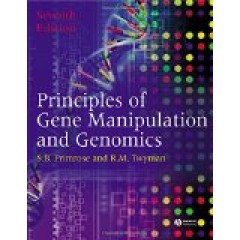
Principles of gene manipulation and genomics
- Edition
- 7th
- ISBN/ISSN
- 9781405135443
- Collation
- xxii, 644 p. : ill. : ind. ; 28 cm.
- Series Title
- -
- Call Number
- 660.65 Prim p
- Edition
- 7th
- ISBN/ISSN
- 9781405135443
- Collation
- xxii, 644 p. : ill. : ind. ; 28 cm.
- Series Title
- -
- Call Number
- 660.65 Prim p
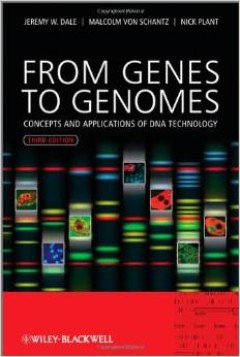
From genes to genomes : concepts and applications of DNA technology
The latest edition of this highly successful textbook introduces the key techniques and concepts involved in cloning genes and in studying their expression and variation. The new edition features: Increased coverage of whole-genome sequencing technologies and enhanced treatment of bioinformatics. Clear, two-colour diagrams throughout. A dedicated website including all figures. Noted for it…
- Edition
- 3rd edition
- ISBN/ISSN
- 9780470683859
- Collation
- xiv, 386 p. : ill. : ind. ; 25 cm.
- Series Title
- -
- Call Number
- 660.65 Dal f
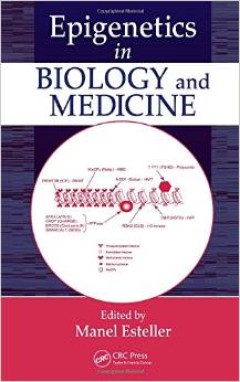
Epigenetics in biology and medicine
Anomalous epigenetic patterns touch many areas of study including biomedical, scientific, and industrial. With perspectives from international experts, this resource offers an all-inclusive overview of epigenetics, which bridge DNA information and function by regulating gene expression without modifying the DNA sequence itself. Epigenetics, in its most basic form, means heredity is not the so…
- Edition
- -
- ISBN/ISSN
- 9780849372896
- Collation
- xii, 297 p. : ill. : ind. ; 24 cm.
- Series Title
- -
- Call Number
- 572.86 Epi
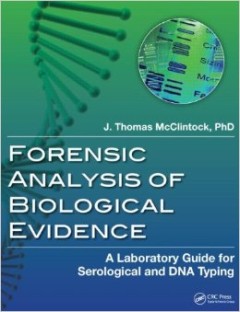
Forensic analysis of biological evidence : a Laboratory guide for serological…
A powerful tool in the identification of individuals, DNA typing has revolutionized criminal and paternity investigations. Widespread analysis is now conducted by public and private laboratories in the United States and abroad. Focusing on the basic techniques used in forensic DNA laboratories, Forensic Analysis of Biological Evidence: A Laboratory Guide for Serological and DNA Typing introduce…
- Edition
- -
- ISBN/ISSN
- 9781466514561
- Collation
- xxiii, 152 p. : ill. : ind. ; 28 cm.
- Series Title
- -
- Call Number
- 614.12 McC f
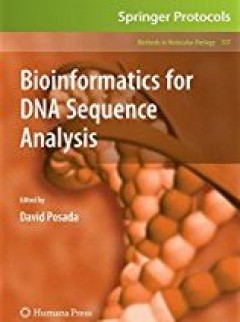
Bioinformatics for DNA sequence analysis
The recent accumulation of information from genomes, including their sequences, has resultednotonlyinnewattemptstoansweroldquestionsandsolvelongstandingissues inbiology,butalsointheformulationofnovelhypothesesthatarisepreciselyfromthis wealth of data. The storage, processing, description, transmission, connection, and analysis of these data has prompted bioinformatics to become one the most rel…
- Edition
- -
- ISBN/ISSN
- 9781588299109
- Collation
- xiii, 354 p. : ill. : ind. ; 27 cm.
- Series Title
- -
- Call Number
- 572.8 Bio
 Computer Science, Information & General Works
Computer Science, Information & General Works  Philosophy & Psychology
Philosophy & Psychology  Religion
Religion  Social Sciences
Social Sciences  Language
Language  Pure Science
Pure Science  Applied Sciences
Applied Sciences  Art & Recreation
Art & Recreation  Literature
Literature  History & Geography
History & Geography